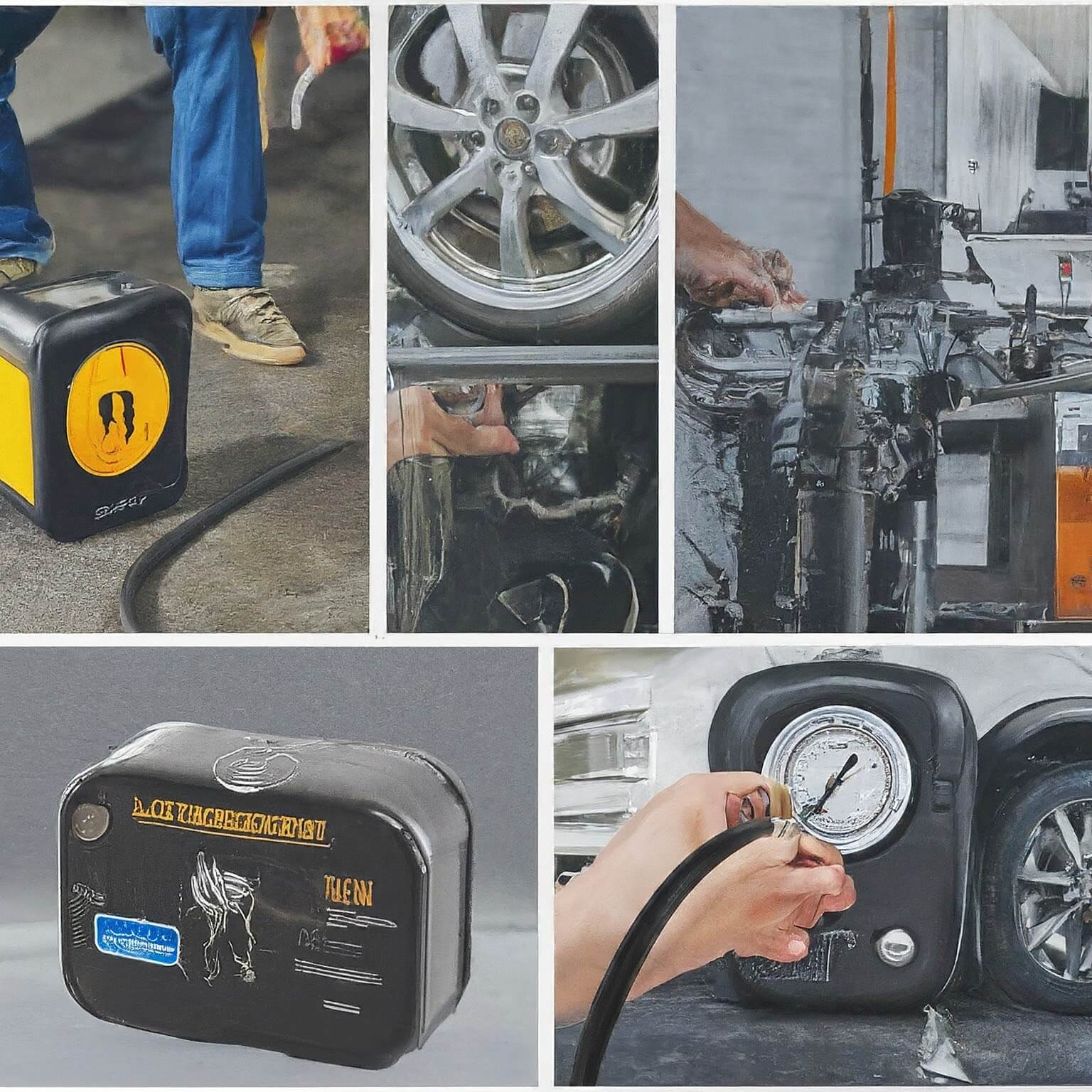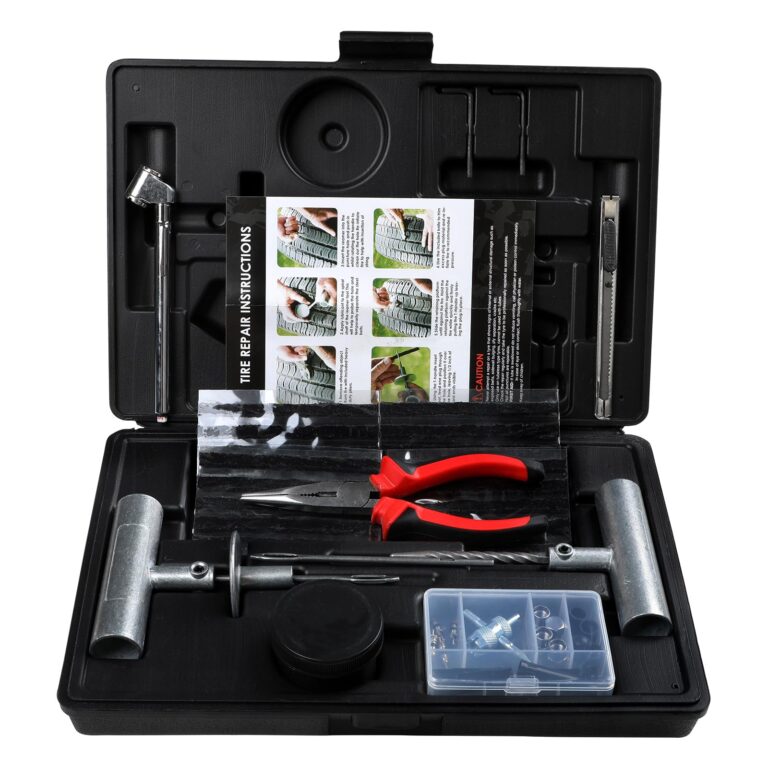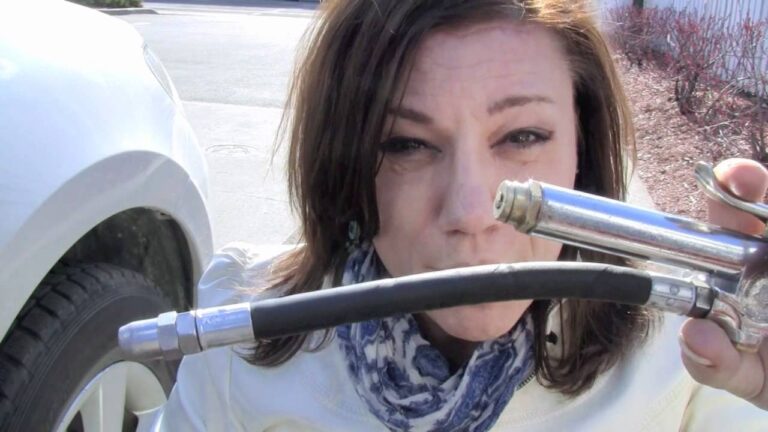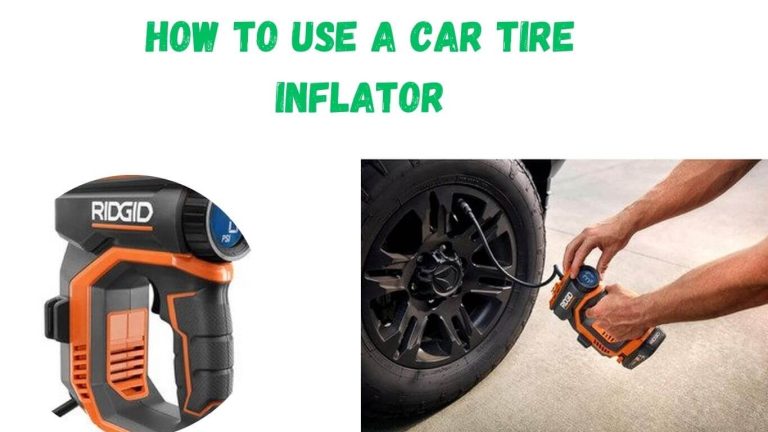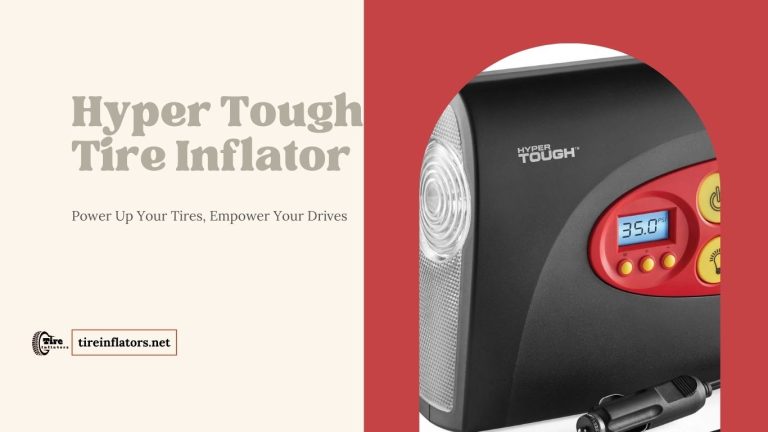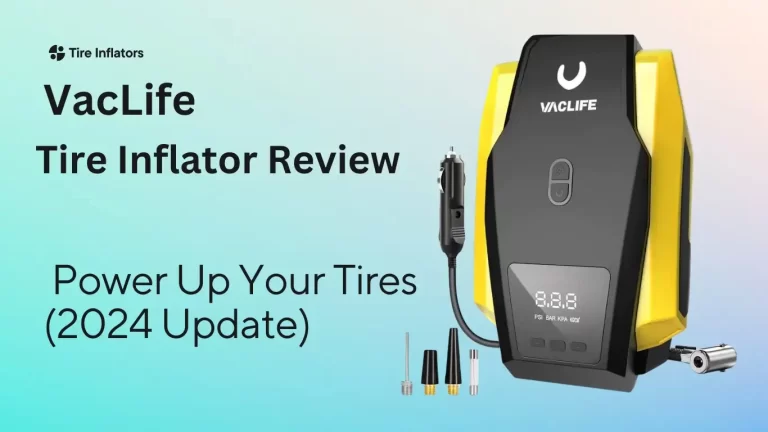Portable Tire Inflator Not Working: Causes, Solutions, and Safety Tips
Portable tire inflators are invaluable tools for motorists, providing a convenient means to maintain tire pressure, enhance fuel efficiency, and ensure safety on the road. However, like any mechanical device, they can sometimes fail to work as expected. Understanding the causes of these failures, how to troubleshoot them, and adhering to safety tips can help you get back on the road swiftly and safely. This article delves into the common issues that might cause a portable tire inflator to stop working, offers practical solutions, and outlines essential safety tips.
Tire Inflator Stopped Working
If your tire inflator has stopped working, here are some troubleshooting steps you can take to identify and possibly resolve the issue:
1. Check Power Supply
- Power Source: Ensure that the inflator is plugged into a working electrical outlet if it’s a plug-in model. For battery-operated models, check that the battery is charged.
- Power Cord: Inspect the power cord for any visible damage or fraying. Make sure it is securely connected.
2. Inspect the Fuse or Circuit Breaker
- Fuse Check: If your inflator is not turning on at all, check for a blown fuse or tripped circuit breaker in your home or vehicle.
- Reset: If you find a tripped circuit breaker, reset it and try using the inflator again.
3. Examine the Hose and Nozzle
- Blockages: Look for any kinks, blockages, or damage in the hose that might prevent airflow. Clear any debris from the nozzle.
- Connection: Ensure the nozzle is securely attached to the tire valve. A loose connection can prevent inflation.
4. Check the Tire Valve
- Valve Condition: Inspect the tire valve for any damage. If the valve is broken or leaking, the inflator won’t be able to inflate the tire.
- Remove Valve Cap: Make sure the valve cap is removed before attempting to inflate.
5. Listen for Airflow
- Operational Sounds: When you turn on the inflator, listen for any sounds of operation. If there’s no sound, the inflator may have a malfunction.
- Air Leakage: If you hear air escaping from the inflator itself, there may be an internal issue.
6. Check for Overheating
- Cooling Period: If you’ve been using the inflator for a long time, it may have overheated. Allow it to cool down for a while before trying again.
7. Inspect for Mechanical Issues
- Moving Parts: Check for any visible mechanical issues, such as a jammed motor or damaged components. If you notice anything unusual, it may require professional repair.
8. Consult the Manual
- Troubleshooting Guide: Refer to the user manual for specific troubleshooting steps related to your model. The manual may provide additional insights into common issues.
9. Contact Customer Support
- Warranty and Repair: If none of the above steps resolve the issue, consider contacting the manufacturer’s customer support for assistance. If the inflator is under warranty, you may be able to get it repaired or replaced.
10. Consider Alternatives
- Use a Different Inflator: If you need to inflate a tire urgently and the inflator is not working, consider using a manual pump or borrowing another inflator.
By following these steps, you should be able to diagnose the issue with your tire inflator. If the problem persists after troubleshooting, it may need professional evaluation or replacement.
Causes of Portable Tire Inflator Failure
Power Supply Issues
One of the most common reasons a portable tire inflator might not work is due to power supply problems. This could be a result of a dead battery, a blown fuse, or a faulty connection.
Motor Failure
The motor is the heart of the tire inflator. If it overheats or suffers from wear and tear over time, it might stop working. This could be due to excessive use, insufficient cooling, or age.
Hose or Valve Leaks
Leaks in the hose or valve can also prevent a tire inflator from working correctly. Air escaping from these components means the inflator cannot maintain the pressure necessary to inflate a tire.
Faulty Pressure Gauge
A malfunctioning pressure gauge might not directly stop the inflator from working but can lead to incorrect tire pressure, which is dangerous. This could be due to internal damage or calibration issues.
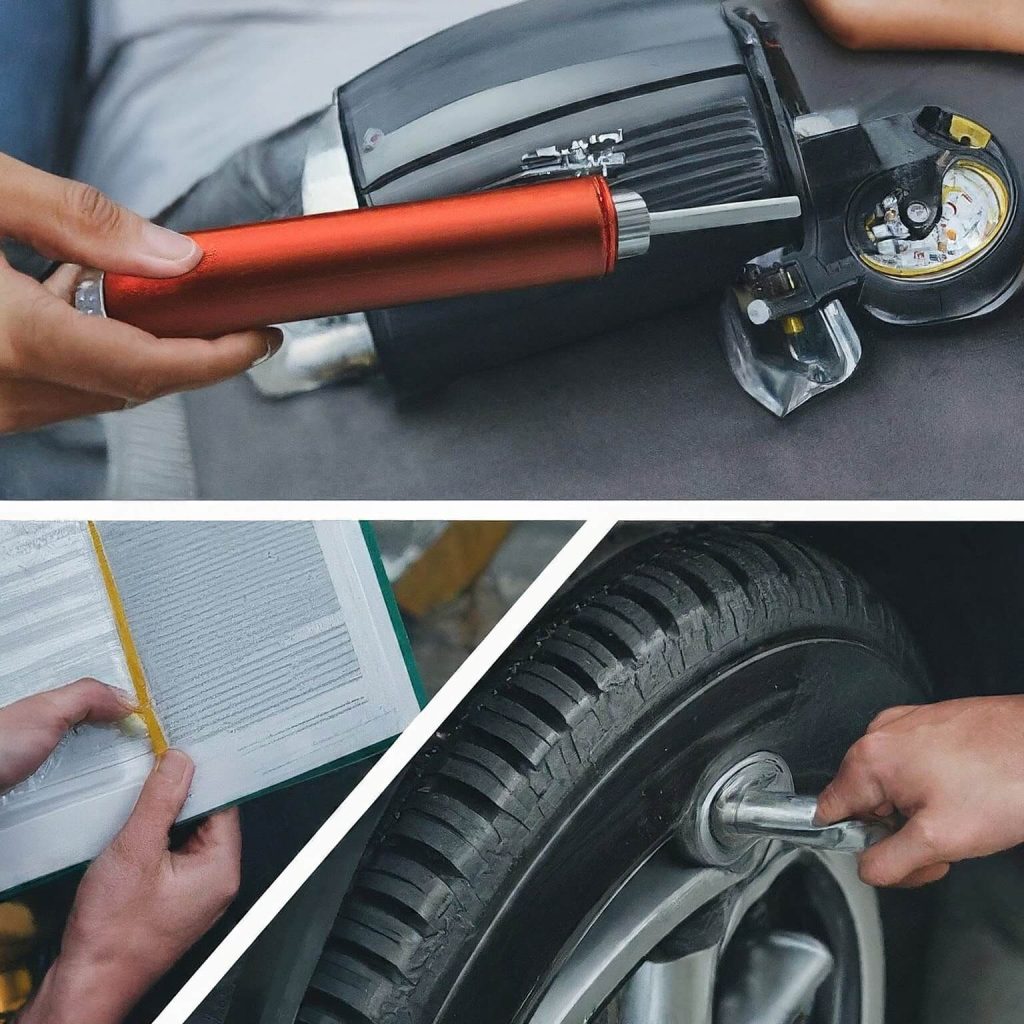
Solutions to Get Your Portable Tire Inflator Working Again
Check and Replace the Power Source
Ensure that the inflator’s battery is charged or replace it if necessary. If using a vehicle’s power outlet, check the fuse and replace it if blown. Also, ensure a secure connection to the power source.
Allow the Motor to Cool Down
If the motor has overheated, give it time to cool down before attempting to use it again. To prevent future occurrences, limit the continuous use of the inflator and allow it to cool between uses.
Inspect and Repair Leaks
Carefully inspect the hose and valve for any signs of damage or wear. Replace the hose or valve if leaks are found. Ensure all connections are tight and secure to prevent air from escaping.
Calibrate or Replace the Pressure Gauge
If the pressure gauge is giving inaccurate readings, consider having it calibrated. If calibration is not possible or does not fix the issue, replacing the gauge or the entire inflator might be necessary.
Safety Tips When Using a Portable Tire Inflator
Read the Manual
Before using a portable tire inflator, always read the manufacturer’s manual. This will provide specific instructions and safety warnings for your particular model.
Monitor the Inflator During Use
Never leave a tire inflator unattended while in use. Monitoring the process helps prevent over-inflation, which can lead to tire failure.
Use in a Well-Ventilated Area
When using a tire inflator powered by your vehicle, ensure you are in a well-ventilated area to avoid the buildup of exhaust fumes, which can be hazardous to your health.
Regular Maintenance
Regularly inspect your portable tire inflator for any signs of wear or damage. Clean it according to the manufacturer’s instructions and store it in a dry, cool place. In conclusion, while encountering a non-working portable tire inflator can be frustrating, diagnosing the problem is often straightforward. By understanding the common causes of failure, applying the appropriate solutions, and adhering to safety tips, you can ensure your portable tire inflator remains a reliable tool for keeping your tires at the correct pressure, enhancing your vehicle’s performance, and ensuring your safety on the road.
Preventative Measures to Avoid Future Inflator Issues
Regular Testing
To avoid surprises, regularly test your portable tire inflator even when you don’t necessarily need to use it. This ensures that it’s in working order for when you do need it in an emergency.
Avoid Overuse
Portable tire inflators are not designed for heavy-duty use. Using them within their recommended limits can prevent motor burnout and extend the life of the device.
Keep It Clean
Dirt and debris can clog the inflator’s components. After each use, wipe down the device and store it in its case or a clean area to prevent accumulation of dirt.
Update Your Equipment
Technology advances and so do tire inflators. If you have an older model, consider upgrading to a newer one with improved functionality and reliability.
Troubleshooting Tips
Listen for Unusual Noises
Unusual noises can indicate internal problems. If you hear rattling or grinding, the inflator may have loose parts or debris inside.
Check for Warranty Coverage
If your tire inflator stops working and it’s still under warranty, contact the manufacturer for a repair or replacement.
Seek Professional Help
If you’re unable to diagnose or fix the problem yourself, it might be time to seek help from a professional. This could be the manufacturer’s customer service or a local mechanic.
When to Replace Your Portable Tire Inflator
Consistent Performance Issues
If your tire inflator frequently has issues despite troubleshooting and repairs, it may be time to replace it.
Safety Concerns
If the device shows signs of electrical issues, such as sparking or smoking, replace it immediately to avoid safety hazards.
Technological Upgrades
If newer models offer significant improvements in speed, pressure accuracy, or additional features like automatic shut-off, upgrading could be beneficial for convenience and efficiency.
Brand wise Tire Inflator Troubleshoot
Kobalt Tire Inflator wont Inflate
If your Kobalt tire inflator is not inflating, there could be several reasons for the issue. Here are some troubleshooting steps you can take to identify and resolve the problem:
1. Check Power Supply
- Battery Issues: If your inflator is battery-operated, ensure the battery is charged. If it’s a plug-in model, check that it’s properly connected to a power source.
- Power Cord: Inspect the power cord for any damage or fraying. Make sure it’s securely plugged in.
2. Inspect the Hose and Nozzle
- Blockages: Check the hose for any blockages or kinks that might prevent airflow. Remove any debris that may be obstructing the nozzle.
- Connection: Ensure that the nozzle is securely attached to the tire valve. A loose connection can prevent inflation.
3. Check the Tire Valve
- Valve Condition: Inspect the tire valve for damage. If the valve is broken or leaking, the inflator won’t be able to inflate the tire.
- Remove Valve Cap: Make sure the valve cap is removed before attempting to inflate.
4. Adjust Settings
- Pressure Settings: If your inflator has preset pressure settings, ensure they are correctly configured. If the set pressure is lower than the current tire pressure, the inflator may not activate.
- Mode Selection: Some inflators have different modes for various types of inflatables. Make sure you’ve selected the correct mode for tires.
5. Listen for Airflow
- Operational Sounds: When you turn on the inflator, listen for any operational sounds. If you hear no noise, the inflator may be malfunctioning.
- Air Leakage: If air is escaping from the inflator itself, there may be an internal issue or a damaged seal.
6. Check for Overheating
- Cooling Period: If you’ve been using the inflator for an extended period, it may have overheated. Allow it to cool down for a while before trying again.
7. Consult the Manual
- Troubleshooting Guide: Refer to the user manual for specific troubleshooting steps related to your model. The manual may have additional insights into common issues.
8. Contact Customer Support
- Warranty and Repair: If none of the above steps resolve the issue, consider contacting Kobalt customer support for assistance. If the inflator is under warranty, you may be able to get it repaired or replaced.
9. Consider Alternatives
- Use a Different Inflator: If you need to inflate a tire urgently and the Kobalt inflator is not working, consider using a manual pump or borrowing another inflator.
By following these troubleshooting steps, you should be able to identify the issue with your Kobalt tire inflator and take appropriate action to resolve it. If the problem persists, professional assistance may be necessary.
Fanttik Tire Inflator wont Inflate
If your Fanttik tire inflator is not inflating, there could be several reasons for the issue. Here are some troubleshooting steps to help you identify and resolve the problem:
1. Check Power Supply
- Battery Charge: If your inflator is battery-operated, ensure that the battery is fully charged. If it’s a plug-in model, verify that it’s properly connected to a power source.
- Power Cord: Inspect the power cord for any damage or fraying. Make sure it’s securely plugged in.
2. Inspect the Hose and Nozzle
- Blockages: Check the hose for any kinks, blockages, or damage that might prevent airflow. Remove any debris that may be obstructing the nozzle.
- Connection: Ensure that the nozzle is securely attached to the tire valve. A loose connection can prevent inflation.
3. Check the Tire Valve
- Valve Condition: Inspect the tire valve for damage. If the valve is broken or leaking, the inflator won’t be able to inflate the tire.
- Remove Valve Cap: Make sure the valve cap is removed before attempting to inflate.
4. Adjust Settings
- Pressure Settings: Ensure that the preset pressure on the inflator is appropriate for the tire you are trying to inflate. If the set pressure is lower than the current tire pressure, the inflator may not activate.
- Mode Selection: Some models have different modes for various types of inflatables. Make sure you’ve selected the correct mode for tires.
5. Listen for Airflow
- Operational Sounds: Turn on the inflator and listen for any operational sounds. If you hear no noise, the inflator may be malfunctioning.
- Air Leakage: If air is escaping from the inflator itself, there may be an internal issue or a damaged seal.
6. Check for Overheating
- Cooling Period: If you’ve been using the inflator for an extended period, it may have overheated. Allow it to cool down for a while before trying again.
7. Consult the Manual
- Troubleshooting Guide: Refer to the user manual for specific troubleshooting steps related to your model. The manual may have additional insights into common issues.
8. Contact Customer Support
- Warranty and Repair: If none of the above steps resolve the issue, consider contacting Fanttik customer support for assistance. If the inflator is under warranty, you may be able to get it repaired or replaced.
9. Consider Alternatives
- Use a Different Inflator: If you need to inflate a tire urgently and the Fanttik inflator is not working, consider using a manual pump or borrowing another inflator.
By following these troubleshooting steps, you should be able to identify the issue with your Fanttik tire inflator and take appropriate action to resolve it. If the problem persists, professional assistance may be necessary.
slime tire inflator wont work
If your Slime tire inflator is not working, there could be several reasons for the issue. Here are some troubleshooting steps to help you identify and resolve the problem:
1. Check Power Supply
- Battery Charge: If your inflator is battery-operated, make sure the battery is fully charged. If it’s a plug-in model, ensure it is properly connected to a power source.
- Power Cord: Inspect the power cord for any damage or fraying. Make sure it is securely plugged in.
2. Inspect the Hose and Nozzle
- Blockages: Check the inflator hose for kinks, blockages, or damage that might prevent airflow. Clear any debris from the nozzle.
- Connection: Ensure that the nozzle is firmly attached to the tire valve. A loose connection can prevent inflation.
3. Check the Tire Valve
- Valve Condition: Inspect the tire valve for any damage. If the valve is broken or leaking, the inflator won’t be able to inflate the tire.
- Remove Valve Cap: Make sure the valve cap is removed before attempting to inflate.
4. Adjust Settings
- Pressure Settings: If your inflator has preset pressure settings, ensure they are set correctly for the tire you are inflating. If the set pressure is lower than the current tire pressure, the inflator may not activate.
- Mode Selection: Some models have different modes for various inflatables. Ensure you’ve selected the correct mode for tires.
5. Listen for Airflow
- Operational Sounds: Turn on the inflator and listen for any operational sounds. If you hear no noise, the inflator may be malfunctioning.
- Air Leakage: If air is escaping from the inflator itself, there may be an internal issue or a damaged seal.
6. Check for Overheating
- Cooling Period: If you’ve been using the inflator for an extended period, it may have overheated. Allow it to cool down for a while before trying again.
7. Consult the Manual
- Troubleshooting Guide: Refer to the user manual for specific troubleshooting steps related to your model. The manual may have additional insights into common issues.
8. Contact Customer Support
- Warranty and Repair: If none of the above steps resolve the issue, consider contacting Slime customer support for assistance. If the inflator is under warranty, you may be able to get it repaired or replaced.
9. Consider Alternatives
- Use a Different Inflator: If you need to inflate a tire urgently and the Slime inflator is not working, consider using a manual pump or borrowing another inflator.
By following these troubleshooting steps, you should be able to identify the issue with your Slime tire inflator and take appropriate action to resolve it. If the problem persists, professional assistance may be necessary.
Roybi Tire Inflator not working Causes
If your Roybi tire inflator is not working, there could be several potential causes. Here are some common issues and troubleshooting steps to help you identify the problem:
1. Power Supply Issues
- Battery Charge: If the inflator is battery-operated, ensure that the battery is fully charged. Try charging it again and see if it works.
- Power Connection: For corded models, check that the inflator is properly plugged into a working outlet or vehicle power source.
2. Blown Fuse
- Fuse Check: If the inflator is connected to your vehicle, check the fuse for the power outlet. A blown fuse can prevent the inflator from operating.
3. Hose and Nozzle Problems
- Blockages: Inspect the hose for any kinks, blockages, or damage that could impede airflow. Clear any debris from the nozzle.
- Connection: Ensure the nozzle is securely connected to the tire valve. A loose connection can lead to air leaks.
4. Tire Valve Issues
- Valve Condition: Check the tire valve for any damage or leaks. A faulty valve can prevent proper inflation.
- Cap Removal: Make sure the valve cap is removed before attempting to inflate.
5. Overheating
- Cooling Period: If the inflator has been used for an extended period, it may have overheated. Allow it to cool down for a while before trying again.
6. Internal Mechanical Issues
- Moving Parts: Listen for any unusual sounds when you turn on the inflator. If there are no sounds or if it sounds different than usual, there may be an internal mechanical failure.
- Motor Problems: If the motor is not functioning, the inflator will not work. This may require professional repair or replacement.
7. Pressure Settings
- Incorrect Settings: If your inflator has preset pressure settings, ensure they are set correctly. If the set pressure is lower than the current tire pressure, the inflator may not activate.
8. User Manual Reference
- Consult the Manual: Refer to the user manual for specific troubleshooting steps related to your Roybi inflator model. The manual may provide additional insights into common issues.
9. Customer Support
- Manufacturer Assistance: If none of the above steps resolve the issue, consider contacting Roybi customer support for assistance. They may provide troubleshooting tips or warranty repair options.
By systematically checking these potential causes, you should be able to identify why your Roybi tire inflator is not working and take appropriate action to resolve the issue.
My Kobalt Tire Inflator Trouble Shooting
If you’re experiencing issues with your Kobalt tire inflator, here are some common troubleshooting steps to help you identify and resolve the problems:
Kobalt Tire Inflator Troubleshooting Guide
1. Inflator Won’t Turn On
- Check Power Source: Ensure that the inflator is properly plugged into a working outlet or that the battery is charged (for battery-operated models).
- Inspect the Power Cord: Look for any visible damage to the power cord. If it’s frayed or damaged, it may need to be replaced.
- Fuse Check: If using a vehicle power outlet, check the fuse associated with that outlet.
2. No Air Flow
- Hose Connection: Ensure that the hose is securely attached to the tire valve. A loose connection can prevent air from flowing.
- Blocked Hose: Inspect the hose for kinks, blockages, or damage. Clear any debris or obstructions.
- Valve Issues: Check the tire valve for damage. If the valve is faulty, it may need to be replaced.
3. Inflator Stops Working Mid-Use
- Overheating: The inflator may have an automatic shut-off feature to prevent overheating. Allow it to cool down for at least 15-30 minutes before using it again.
- Continuous Use: If you’ve been using it for an extended period, it may need a break to cool off.
4. Digital Display Not Working
- Power Connection: Ensure the inflator is receiving power. If it’s plugged in but the display is not working, there may be an internal issue.
- Reset the Unit: Unplug the inflator for a few minutes and then plug it back in to see if the display resets.
5. Inflation is Slow
- Tire Size and Pressure: Ensure you are using the inflator within its specifications. Larger tires may take longer to inflate.
- Battery Level: If using a battery model, ensure the battery is fully charged, as low power can affect performance.
6. Unusual Noises During Operation
- Internal Damage: Listen for any grinding or rattling noises. This could indicate an internal mechanical issue. Stop using the inflator and inspect it for visible damage.
- Loose Parts: Check for any loose components that may be causing noise.
7. Inflator Will Not Reach Desired Pressure
- Check Settings: If your inflator has preset pressure settings, ensure they are set correctly for the tire you are inflating.
- Gauge Accuracy: Use a separate tire pressure gauge to confirm the actual tire pressure. The built-in gauge may be inaccurate.
8. Battery Issues (for Cordless Models)
- Recharge the Battery: Make sure the battery is charged. If the inflator is not holding a charge, the battery may need to be replaced.
- Battery Connections: Check that the battery is properly seated in the inflator.
When to Seek Professional Help
If you have tried all these troubleshooting steps and your Kobalt tire inflator is still not working, it may be best to contact Kobalt customer service or refer to the user manual for further assistance. If the unit is under warranty, consider inquiring about repair or replacement options.
By following these troubleshooting steps, you can often resolve common issues with your Kobalt tire inflator. Regular maintenance and proper usage can also help extend the life of your inflator and ensure reliable performance.
Conclusion
A portable tire inflator is a handy tool that can save you time and trouble, but it’s not immune to problems. By understanding the potential issues and how to address them, you can ensure your inflator is ready when you need it. Remember to prioritize safety, perform regular maintenance, and be proactive in addressing any signs of trouble. With proper care and attention, your portable tire inflator should serve you well for many years to come.
FAQ
Here are 10 frequently asked questions (FAQs) regarding issues with portable tire inflators not working, along with their answers:
1. Why won’t my portable tire inflator turn on?
- Answer: Check the power source. If it’s battery-operated, ensure the battery is charged. For plug-in models, verify that it’s securely connected to a working outlet or vehicle power socket.
2. What should I do if my inflator keeps blowing fuses?
- Answer: This could indicate a short circuit or overload. Check the inflator for damaged cords or components. Ensure you are using the correct fuse rating for the outlet. If the problem persists, consider replacing the inflator.
3. Why is my tire inflator making a strange noise?
- Answer: Unusual noises may indicate a mechanical issue, such as a jammed motor or damaged internal parts. Stop using the inflator immediately and inspect it for visible damage.
4. Why is my inflator not pumping air into the tire?
- Answer: Ensure the hose is properly connected to the tire valve and check for any blockages in the hose. If the inflator is running but not inflating, there may be an internal failure or air leak.
5. How can I tell if my tire inflator is overheating?
- Answer: If the inflator feels excessively hot to the touch or shuts off unexpectedly during use, it may be overheating. Allow it to cool down before attempting to use it again.
6. What should I do if my inflator has a digital display but it’s not working?
- Answer: Check the power supply and ensure the inflator is charged or plugged in. If the display remains unresponsive, there may be an internal electrical issue.
7. Can I use my tire inflator on different types of tires?
- Answer: Yes, most portable tire inflators can be used on various types of tires, including car, motorcycle, and bicycle tires. However, always check the recommended pressure for each tire type before inflating.
8. Why does my inflator stop working after a few minutes?
- Answer: Many inflators have built-in thermal protection that shuts them off if they overheat. If this happens, allow the unit to cool down before restarting.
9. Is there a way to reset my tire inflator?
- Answer: Some inflators have a reset button or procedure outlined in the user manual. If not, unplugging it for a few minutes may help reset the internal circuitry.
10. When should I contact customer support for my inflator?
- Answer: If you’ve tried troubleshooting and the inflator still doesn’t work, or if you notice any significant damage, it’s best to contact customer support for assistance or warranty service.
These FAQs cover common issues users face with portable tire inflators and provide guidance on how to address them.

